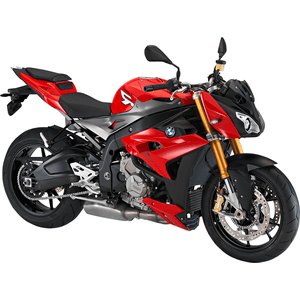BMW S 1000 R (2013–2016): A Roadster That Redefines Naked Performance
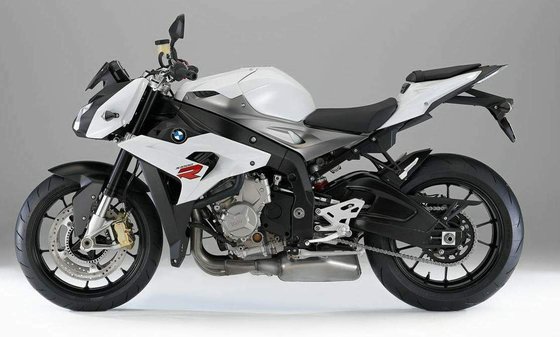
When BMW unleashed the S 1000 R in 2013, it wasn’t just another naked bike—it was a declaration of war on the notion that stripped-down motorcycles must sacrifice sophistication for raw power. Derived from the S 1000 RR superbike, this roadster generation (2013–2016) blended track-bred engineering with streetfighter aggression. After spending time with this machine, it’s clear why it remains a benchmark in the hyper-naked segment. Let’s dive into what makes this BMW a legend.
Design & Ergonomics: Aggression Meets Practicality
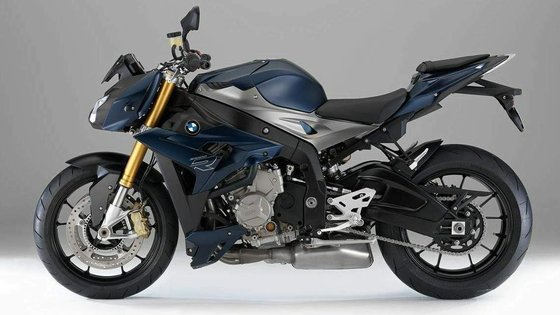
The S 1000 R’s design screams “performance” from every angle. Its asymmetrical headlights and sharp lines pay homage to the RR superbike, but the roadster’s upright stance and minimalist bodywork give it a distinct identity. The 814 mm (32.0-inch) seat height feels accessible for riders of average height, and the aluminum handlebar positions you in a relaxed yet commanding posture. Even after hours in the saddle, the ergonomics strike a rare balance between sporty intent and touring comfort.
The bike’s curb weight of 207 kg (456 lbs) feels lighter than the numbers suggest, thanks to its aluminum bridge frame and strategic weight distribution. Color options like Racing Red and Frozen Dark Blue Metallic accentuate its muscular proportions, while the underbelly exhaust keeps the tail section clean and purposeful.
Engine & Performance: A Four-Cylinder Masterclass
At the heart of the S 1000 R lies a retuned version of the RR’s 999 cc inline-four. With 160 hp @ 11,000 rpm and 112 Nm (82.6 lb-ft) of torque @ 9,250 rpm, this engine isn’t just powerful—it’s intelligently optimized. BMW engineers shifted the powerband lower in the rev range, delivering 10 Nm more torque below 7,500 rpm compared to the RR. The result? A bike that lunges forward with urgency even at mid-range revs, yet remains docile enough for city commutes.
Riding Modes & Electronics
- Rain Mode: Limits power to 136 hp, softens throttle response, and maximizes ABS/ASC intervention. Ideal for slick roads.
- Road Mode: Unlocks full power with progressive throttle mapping. Perfect for spirited canyon rides.
- Dynamic & Dynamic Pro (Optional): Tailored for track use, these modes reduce electronic nannies for experienced riders. The latter even allows controlled wheelies.
The throttle-by-wire system delivers razor-sharp responsiveness, while the optional HP Gear Shift Assistant enables clutchless upshifts—a feature that feels like cheating in its smoothness.
Chassis & Handling: Precision Meets Adaptability
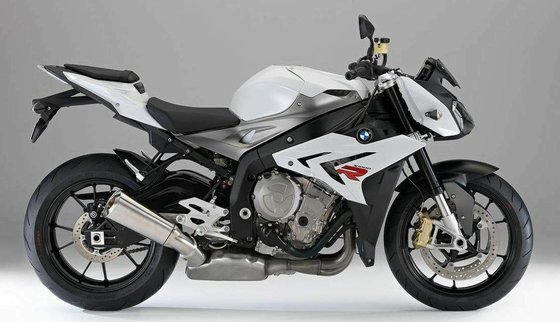
The S 1000 R’s chassis is a masterclass in balance. The aluminum perimeter frame, shared with the RR, provides telepathic feedback. With a wheelbase of 1,439 mm (56.7 inches) and a steering head angle of 65.4°, it carves corners with superbike precision yet remains stable at triple-digit speeds.
Suspension & Brakes
- Front: 46 mm USD fork (120 mm travel), adjustable for rebound and compression.
- Rear: Aluminum swingarm with central spring strut (120 mm travel).
- Brakes: Dual 320 mm discs with radial 4-piston calipers (front) / 220 mm disc with single-piston caliper (rear). Race ABS comes standard.
The optional Dynamic Damping Control (DDC) elevates the experience further, automatically adjusting suspension settings based on riding mode and road conditions. On a twisty backroad, the DDC-equipped bike feels like it’s reading your mind, firming up during aggressive leans and softening over bumps.
Technology: A Cockpit Ahead of Its Time
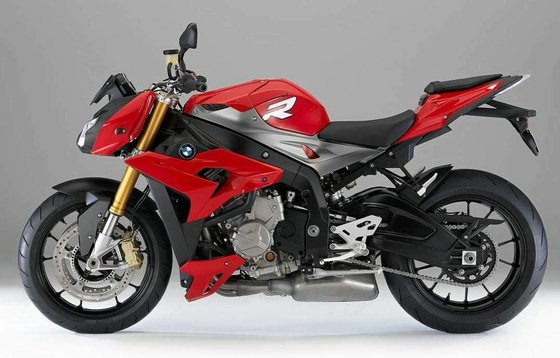
The analog tachometer and LCD dash might seem dated by 2023 standards, but the S 1000 R’s instrumentation was groundbreaking in its era. Features like: - Gear position indicator - Lap timer - Programmable shift lights - Fuel consumption tracking
...were rare in naked bikes at the time. The intuitive handlebar controls let you toggle riding modes on the fly—no need to pull over.
Competition: How Does It Stack Up?
The S 1000 R’s fiercest rivals in 2013–2016 included:
1. Yamaha MT-10 (FZ-10)
- Pros: Crossplane CP4 engine’s characterful roar, lower price.
- Cons: Less refined electronics, heavier chassis.
- Verdict: The MT-10 appeals to riders craving raw sound and aggression, but the BMW’s precision and tech package outclass it.
2. Ducati Monster 1200 S
- Pros: Italian flair, Desmodromic valve reliability, premium components.
- Cons: Higher maintenance costs, less peak power (145 hp).
- Verdict: A style-centric choice vs. the BMW’s engineering-led approach.
3. KTM 1290 Super Duke R
- Pros: Bonkers 1,301 cc V-twin torque (160 Nm!), radical design.
- Cons: Harsh low-speed fueling, intimidating for novices.
- Verdict: The KTM is a hooligan; the BMW is a surgeon.
Key Advantage of the S 1000 R: Its inline-four offers a broader power spread than rivals, making it equally viable for track days, touring, and urban riding. The lean-sensitive DTC (optional) and Race ABS add layers of safety rarely seen in nakeds of this era.
Maintenance: Keeping the Beast in Top Shape
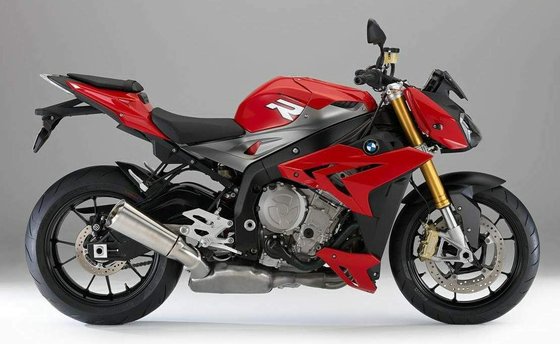
Owning an S 1000 R isn’t just about riding—it’s about maintaining BMW’s engineering excellence. Here’s what to prioritize:
Critical Service Intervals
- Oil Changes: Every 6,000 km (3,700 miles) using SAE 5W-40 (3.5L with filter).
- Valve Clearances: Inspect every 24,000 km (15,000 miles).
- Intake: 0.11–0.20 mm (0.0043–0.0079 in)
- Exhaust: 0.26–0.35 mm (0.0102–0.0138 in)
- Chain: 17T front sprocket / 45T rear. Adjust slack to 25–35 mm (1.0–1.4 in).
Common Wear Items to Upgrade
- Brake Pads: Swap stock sintered pads for EBC HH Sintered for better bite.
- Tires: The OEM 120/70-17 (front) and 190/55-17 (rear) favor sport riding. For longevity, consider Michelin Road 6.
- Air Filter: A K&N High-Flow Filter boosts mid-range throttle response.
- Coolant: Use BMW Water+ compatible formulas to prevent corrosion.
Pro Tips from MOTOPARTS.store
- Winter Storage: Disconnect the 12V/9Ah battery and use a trickle charger.
- Throttle Body Sync: Essential after 12,000 km (7,500 miles) to maintain smooth fueling.
- Spark Plugs: NGK LMAR9D-J iridium plugs last longer than copper equivalents.
Final Verdict: Why the S 1000 R Still Matters
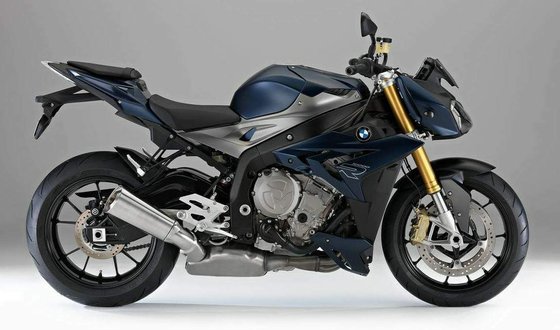
The 2013–2016 BMW S 1000 R isn’t just a motorcycle—it’s a statement. It proved that a naked bike could offer superbike-level tech without compromising everyday usability. Whether you’re chasing apexes or commuting, this machine delivers with a blend of fury and finesse that few rivals can match. For owners looking to enhance their ride, MOTOPARTS.store offers everything from performance exhausts to DDC-compatible suspension upgrades. Aftermarket support ensures this Bavarian beast will remain a force for years to come.







Specifications sheet
| Engine | |
|---|---|
| Stroke: | Four-stroke |
| Max power: | 118 kW | 158.0 hp |
| Max torque: | 112 Nm |
| Valvetrain: | DOHC, 4 valves per cylinder |
| Fuel system: | Electronic fuel injection (BMS-KP) |
| Max power @: | 11000 rpm |
| Displacement: | 999 ccm |
| Max torque @: | 9250 rpm |
| Bore x stroke: | 80.0 x 49.7 mm |
| Configuration: | Inline |
| Cooling system: | Liquid |
| Compression ratio: | 12.0:1 |
| Number of cylinders: | 4 |
| Throttle body diameter: | 48 mm |
| Dimensions | |
|---|---|
| Wheelbase: | 1439 mm (56.7 in) |
| Dry weight: | 178 |
| Wet weight: | 207 |
| Seat height: | 814-820 mm (32.0-32.3 in) |
| Overall width: | 845 mm (33.3 in) |
| Overall height: | 1228 mm (48.3 in) |
| Overall length: | 2057 mm (81.0 in) |
| Ground clearance: | 165 mm (6.5 in) |
| Fuel tank capacity: | 17.5 L (4.6 US gal) |
| Drivetrain | |
|---|---|
| Final drive: | chain |
| Gear ratios: | 1st 2.6471, 2nd 2.091, 3rd 1.727, 4th 1.500, 5th 1.360, 6th 1.261 |
| Chain length: | 118 |
| Transmission: | 6-speed, cable-operated wet clutch |
| Rear sprocket: | 45 |
| Front sprocket: | 17 |
| Electronics | |
|---|---|
| ABS: | BMW Motorrad Race ABS (partially integral, disengageable) |
| Riding modes: | Rain, Road, Dynamic, Dynamic Pro (optional) |
| Instrumentation: | LCD display with analog tachometer, gear indicator, lap timer |
| Traction control: | ASC standard/DTC optional with lean angle sensor |
| Maintenance | |
|---|---|
| Engine oil: | 5W40 |
| Idle speed: | 1250 ± 50 rpm |
| Brake fluid: | DOT 4 |
| Spark plugs: | NGK LMAR9D-J |
| Coolant capacity: | 1.9 |
| Rear tire pressure: | 2.9 bar (42 psi) |
| Engine oil capacity: | 3.5 |
| Front tire pressure: | 2.5 bar (36 psi) |
| Engine oil change interval: | Every 5000 km or 2 years |
| Valve clearance (intake, cold): | 0.11–0.20 mm |
| Valve clearance check interval: | 24,000 km / 15,000 mi |
| Valve clearance (exhaust, cold): | 0.26–0.35 mm |
| Chassis and Suspension | |
|---|---|
| Frame: | Aluminum composite frame, self-supporting engine |
| Rear tire: | 190/55 z-17 |
| Front tire: | 120/70 z-17 |
| Rear wheel: | 6.00 x 17 cast aluminum |
| Front wheel: | 3.50 x 17 cast aluminum |
| Rear brakes: | 1 x 220 mm disc, 1-piston floating caliper (Race ABS optional) |
| Front brakes: | 2 x 320 mm discs, 4-piston radial calipers (Race ABS optional) |
| Rear suspension: | Aluminum swingarm with central spring strut, adjustable preload/rebound |
| Front suspension: | 46 mm USD fork, adjustable compression/rebound damping |
| Rear wheel travel: | 120 mm (4.7 in) |
| Front wheel travel: | 120 mm (4.7 in) |



